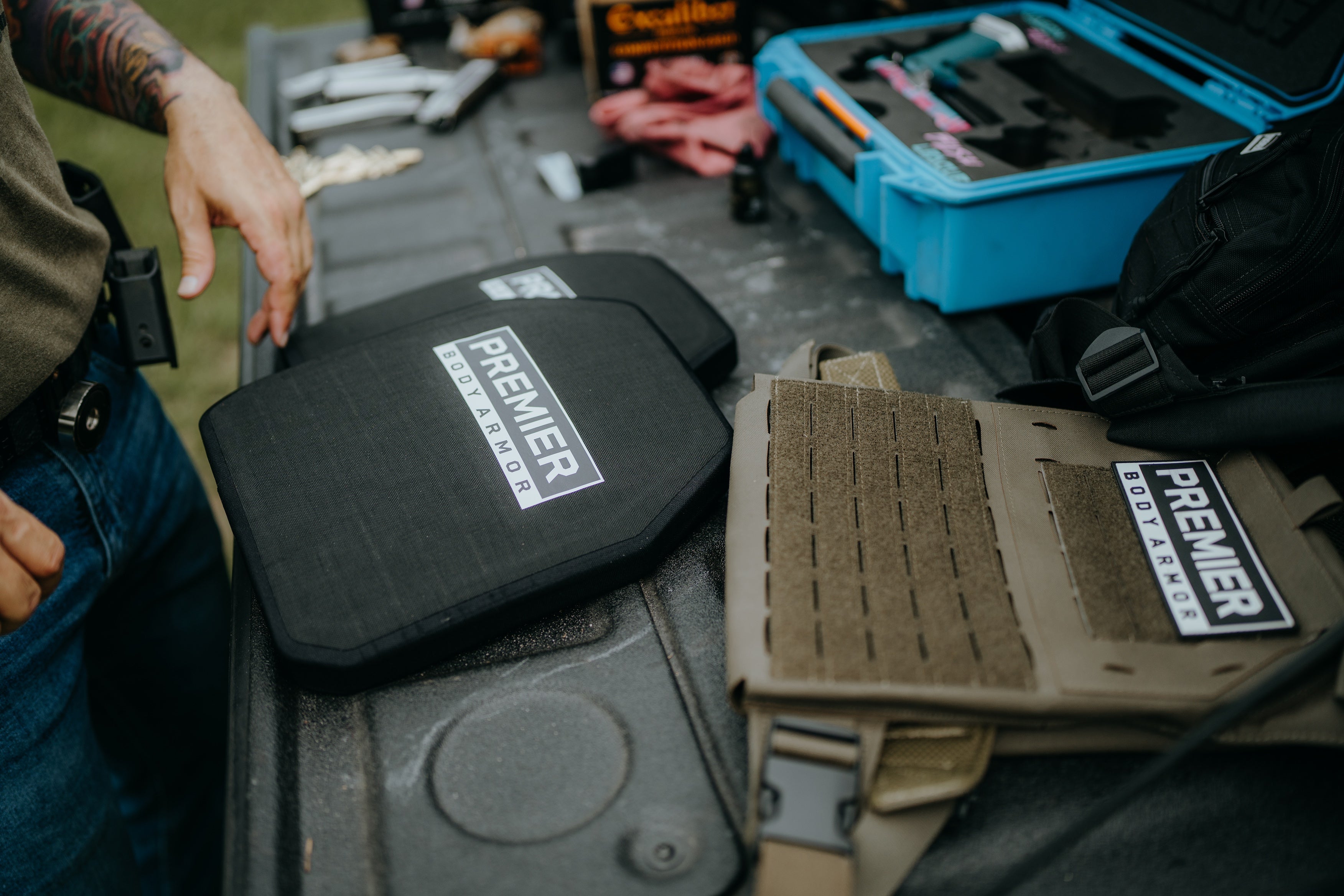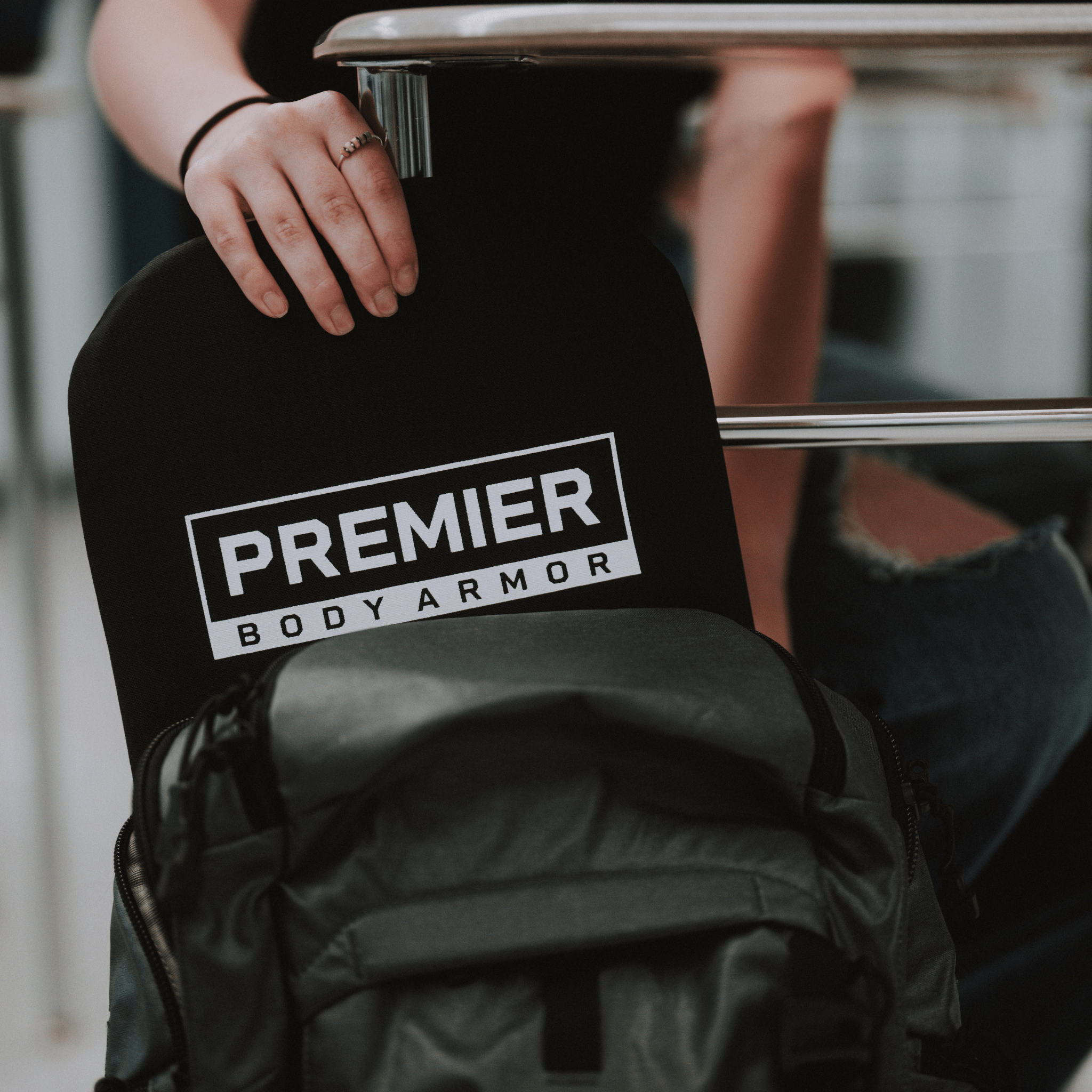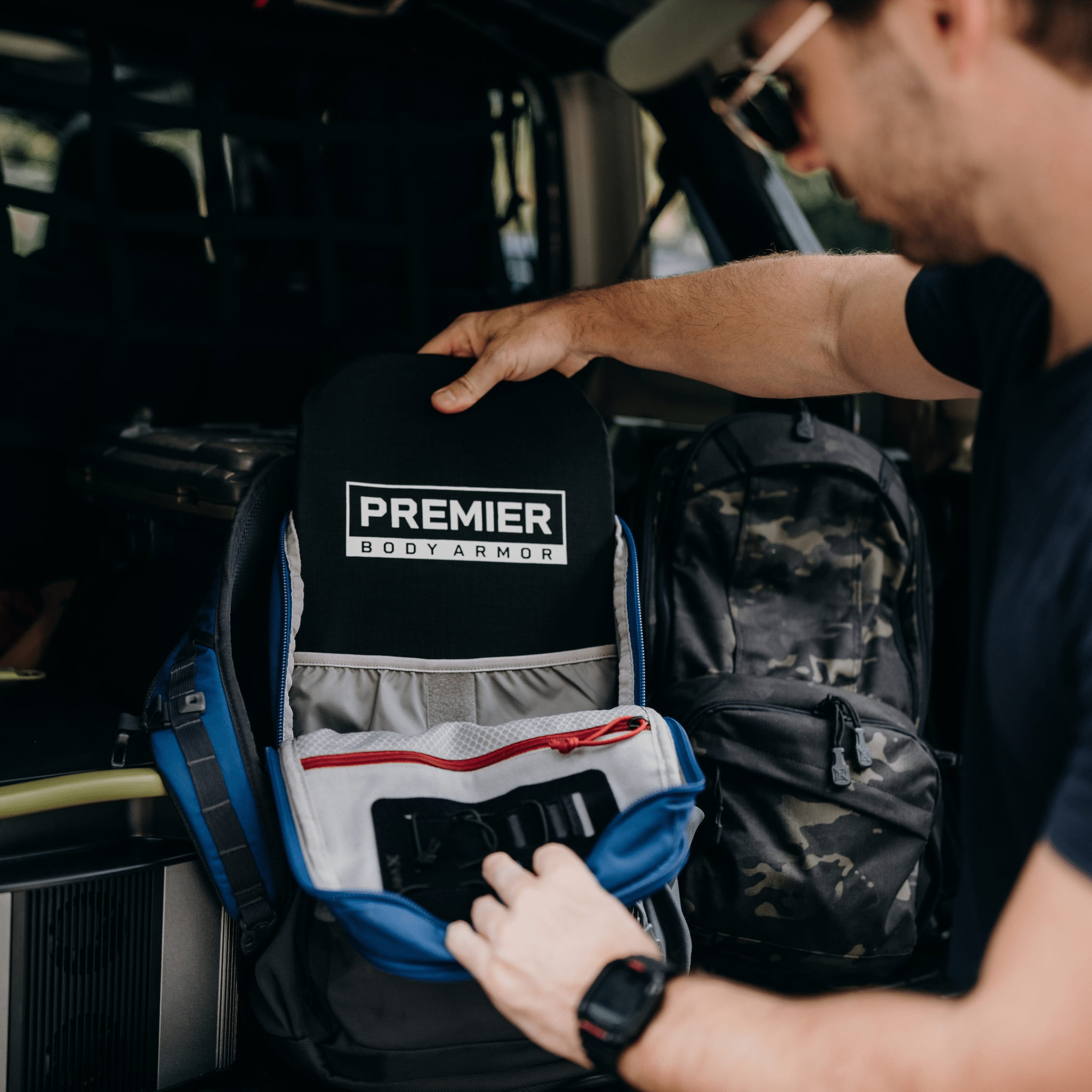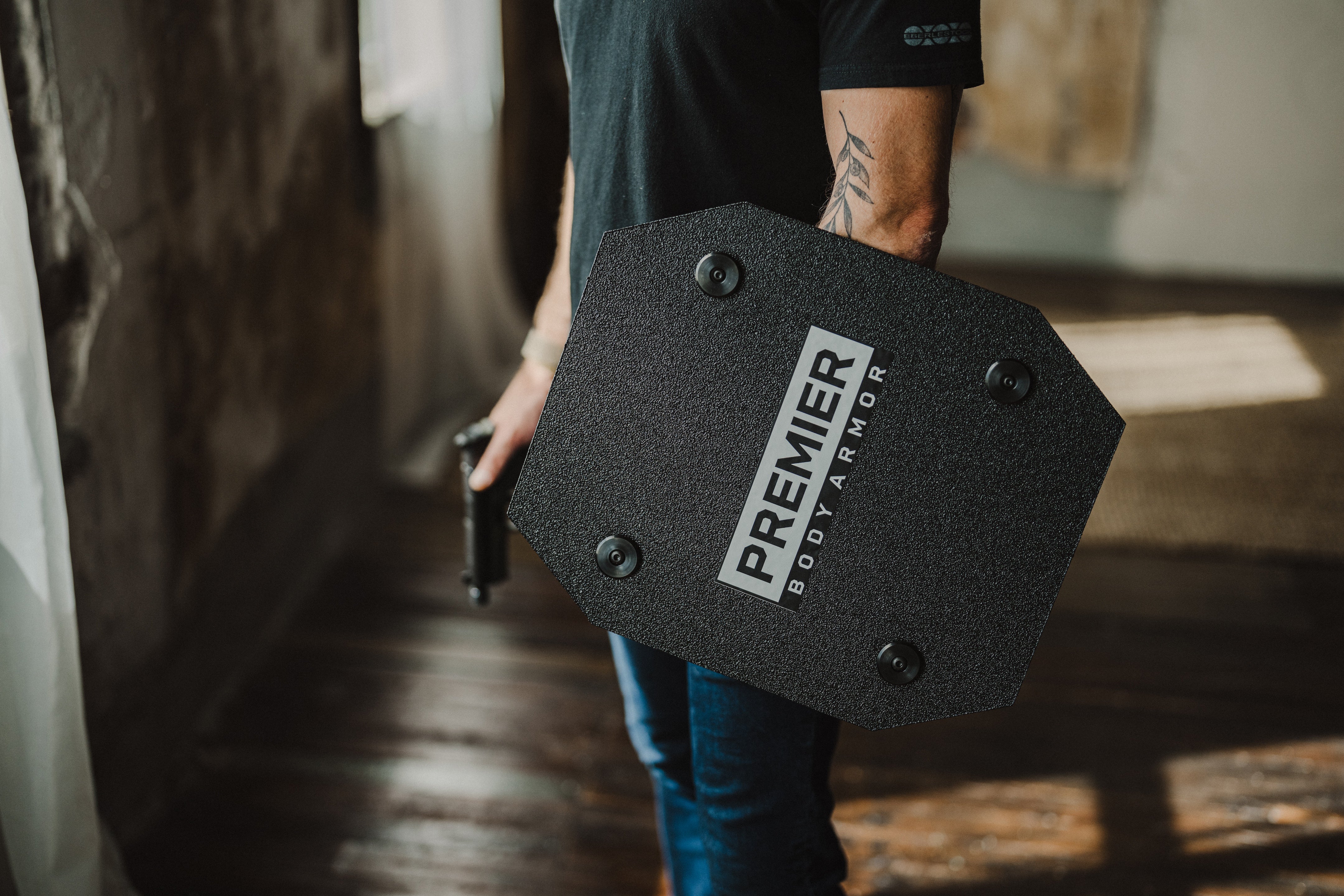What is Body Armor Made of? A Deep Dive into Armor Components
What is body armor made of? The answer lies in a range of advanced protective materials designed to keep you safe without compromising mobility. Whether you need armor for personal protection, military deployments, or law enforcement operations, understanding how these materials work is the first step in choosing the right gear.
In this guide, we’ll explore the evolution of body armor, from historical materials like leather and steel to modern body armor technologies such as Kevlar, Dyneema, Spectra Shield, and ceramic.We’ll also highlight each material’s strengths, weaknesses, and best use cases. Let’s take a closer look at how each layer contributes to keeping you protected.
Historical Body Armor Materials
Body armor has gone through a dramatic evolution. Early protective gear often relied on leather, bronze, or chainmail, providing limited defense against edged weapons but virtually none against firearms. As warfare advanced, so did armor materials, with steel and iron becoming the backbone of protection for centuries.
What materials are bulletproof? Historically, only a few materials could reliably stop bullets. Even in World War I and II, what is military body armor made of? It primarily featured steel plates or, in some instances, lightweight aluminum.
While these plates offered better protection than older armor systems, they were still heavy and unwieldy by today’s standards.
To learn more about how the military eventually transitioned to modern materials, check out our article on what body armor the military uses.
What Is Modern Body Armor Made of Today?
What is modern body armor made of? In short, it can include a range of ballistic material, from soft, flexible fabrics like Kevlar to rigid inserts made from ceramic or steel. Today’s body armor is engineered to keep wearers mobile and comfortable without sacrificing protection. Depending on the threat level, you might see:
-
Soft armor vests for everyday concealed wear
-
Hard armor plates (ceramic, steel, or composite) for higher-caliber threats
These innovations enable everyone from civilians to military personnel to choose gear that matches their risk profile. To explore specific bulletproof jacket material options, visit our collection of bulletproof vests.
Kevlar – A Common Bulletproof Vest Material
What is Kevlar body armor made of? Kevlar is a para-aramid (aramid) fiber, prized for its high strength-to-weight ratio. These tightly woven fibers form a network that helps absorb and disperse the impact of bullets, shrapnel, and even stabbing attacks. As a result, Kevlar remains a top choice in bulletproof vest materials where flexibility and comfort are just as important as stopping power.
Since Kevlar is relatively lightweight, wearers can move with less fatigue, making it popular among law enforcement, security professionals, and civilians. To see a practical example, check out our Discreet Executive Vest, which showcases how Kevlar can provide effective protection with minimal bulk.
Dyneema – A Lightweight and Durable Trauma Reduction Layer
What is Dyneema? Also known as ultra-high molecular weight polyethylene (UHMWPE), Dyneema offers remarkable ballistic resistance in a light, flexible form. This makes it ideal for ballistic vest packages and trauma reduction layers in vests, improving wearer comfort while maintaining stopping power.
Can Dyneema stop a bullet? Absolutely; Dyneema is specifically engineered to withstand high-velocity rounds. Its natural resistance to UV rays, moisture, and chemicals also boosts longevity in harsh conditions. For a deeper look at the pros and cons of soft body armor, see our Soft Body Armor Pros and Cons guide.
Spectra Shield – UHMWPE with Excellent Ballistic Protection
What is Spectra Shield? It’s a specialized form of ultra-high molecular weight polyethylene. So, what does UHMWPE stand for? You guessed it: ultra-high molecular weight polyethylene.
Spectra Shield’s fibers are arranged in multiple layers, creating robust ballistic protection without adding unnecessary weight.
Its lightweight, moisture-resistant, and UV-resistant properties make it a strong contender for those seeking advanced armor solutions. If you’re concerned about how armor handles the force from impacts, explore our guide on backface deformation in body armor to see how Spectra Shield and similar materials manage blunt trauma.
Ceramic – For Strong and Resilient Body Armor Panels
It is important to note that there is no such thing as fully ceramic body anymore. Ceramics are only found in strike faces in modern armor; about 3-10 mm bonded to the front of a UMWPE ballistic core.
What is ceramic body armor made of? Usually, advanced ceramics like boron carbide or silicon carbide, which are exceptionally hard and effective at dispersing a bullet’s kinetic energy. Upon impact, the ceramic armor plates crack or shatter, distributing the force and reducing the bullet’s penetration.
Thanks to its hardness, ceramic plates can stop armor-piercing rounds better than many alternatives. However, they tend to be heavier and more prone to damage from repeated hits. If you need top-tier protection, consider our Stratis Max Level IV Plate for a robust, battle-tested solution.
Steel and Titanium – Traditional and Durable Bulletproof Options
What material is bulletproof? Steel and titanium have stood the test of time for ballistic protection. Steel armor plates excel in rugged conditions, offering consistent protection at a lower cost. Meanwhile, titanium brings comparable strength with less weight, helping reduce fatigue for the wearer, but is very expensive and more of a marketing ploy, than a solution.
For a closer look at how steel compares to ceramic, see our article on Ceramic vs. Steel Plates.
Construction of Body Armor – Combining Components for Maximum Protection
Body armor frequently blends multiple materials to achieve both stopping power and comfort. What is in a bulletproof vest? In most cases, you’ll find bulletproof vest layers of Kevlar, Dyneema, or similar fabrics, sometimes paired with hard plates for extra protection. These layers work together, dispersing a bullet’s kinetic energy to reduce blunt trauma.
How is bulletproof clothing made? Manufacturing can be an engineering puzzle: body armor manufacturers layer different fabrics, resins, or composites to optimize weight, flexibility, and ballistic protection. This hybrid approach ensures body armor can adapt to varied threats and environments while maintaining comfort for the wearer.
NIJ Body Armor Standards & Testing
The National Institute of Justice (NIJ) defines NIJ body armor levels to ensure consistent performance across the industry. These levels, ranging from handgun-focused protection (Level II or IIIA; now HG1 and HG2) to rifle-rated plates (Level III or IV; now RF1, RF2 and RF3), help buyers match armor to anticipated threats.
Choosing the best NIJ certified body armor means you’re selecting gear that’s been rigorously tested under real-world conditions. If you’re unsure which level is right for you, visit our Understanding Body Armor Ratings resource for an in-depth breakdown.
Putting It All Together
Today’s body armor relies on a variety of cutting-edge materials, from lightweight Dyneema to resilient ceramic armor plates, to ensure you stay protected against diverse threats. As new technologies emerge, armor will continue to strike a balance between stopping power, mobility, and wearer comfort, benefiting both civilians and professionals.
If you’re ready to find armor that matches your specific needs, explore our full range of vests, plates, and protective gear. We’ve curated top-rated products that meet or exceed NIJ standards, so you can head into any situation with confidence.










Leave a comment